Essential Cooking Herbs for Your Kitchen
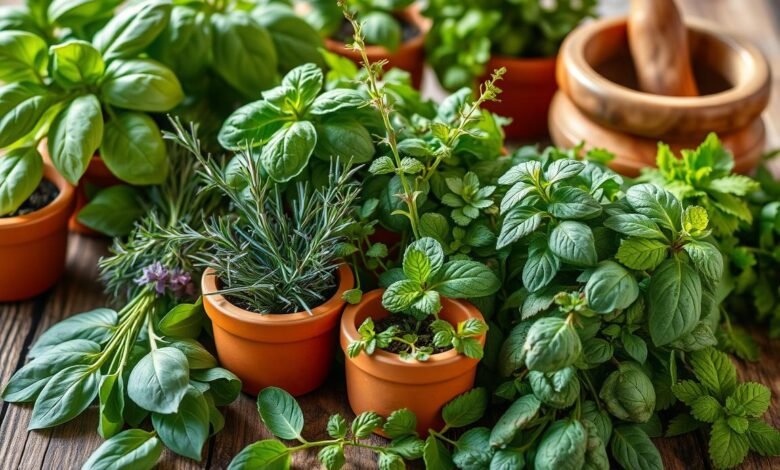
Have you ever found it strange that certain foods have no taste while others explode? Often, the secret is to simply use culinary herbs. Herbs can make a basic salad a feast or provide a frigid winter dish coziness.
In this book, we will go over twelve essential culinary herbs that any home chef needs. Discover how to elevate your cuisine with the help of these fragrant marvels.
Key Takeaways
- The addition of depth and complexity to meals depends on cooking herbs.
- Proper usage of herbs may convert an excellent dinner into an outstanding culinary experience.
- This article discusses 12 vital culinary herbs and how to apply them to boost your cuisine.
- Herbs add a wide range of tastes and earthiness to winter meals, as well as brighten salads.
- Mastering the art of cooking with herbs is a fundamental skill for every home chef.
Introduction to Cooking Herbs
Herbs are key to making food taste great and smell wonderful. They can turn simple dishes into amazing meals. Let’s look at why herbs are important and the top 12 herbs you should have in your kitchen.
Importance of Herbs in Culinary Creations
Herbs are more than simply décor. They add flavor and dimension to a dish. Whether it’s a stew, curry, or dessert, the appropriate herbs may make a tremendous impact.
An overview of essential cooking herbs
From basil to cilantro, herbs come in numerous tastes. Some taste sweet and spicy, while others have earthy flavors. They not only taste fantastic but also offer health advantages, including reducing inflammation and improving digestion.
Exploring herbs may lead to new culinary options. Learning about herbs can help you improve and enjoy cooking, regardless of your skill level.
| Herb | Health Attributes | Culinary Applications |
|---|---|---|
| Basil | Anti-inflammatory, anti-bacterial, beneficial for kidney health | Fresh in Italian dishes, pesto, pasta, meats; Thai basil in Asian cuisine |
| Bay Leaf | Rich in vitamins A, C, and minerals | Used in heavy sauces for its peppery mint flavor |
| Cilantro | Source of fiber, iron, and disease-fighting phytonutrients | Prevalent in Indian, Mexican, and Vietnamese cuisines |
| Cinnamon | May lower blood sugar, reduce inflammation, and offer antioxidant effects | Used in sweet and savory dishes, Mexican, and Asian cuisines |
| Cumin | Increases antioxidant intake, promotes digestion, and provides iron | Widely used in Southwest (US), Mexican, and Middle Eastern recipes |
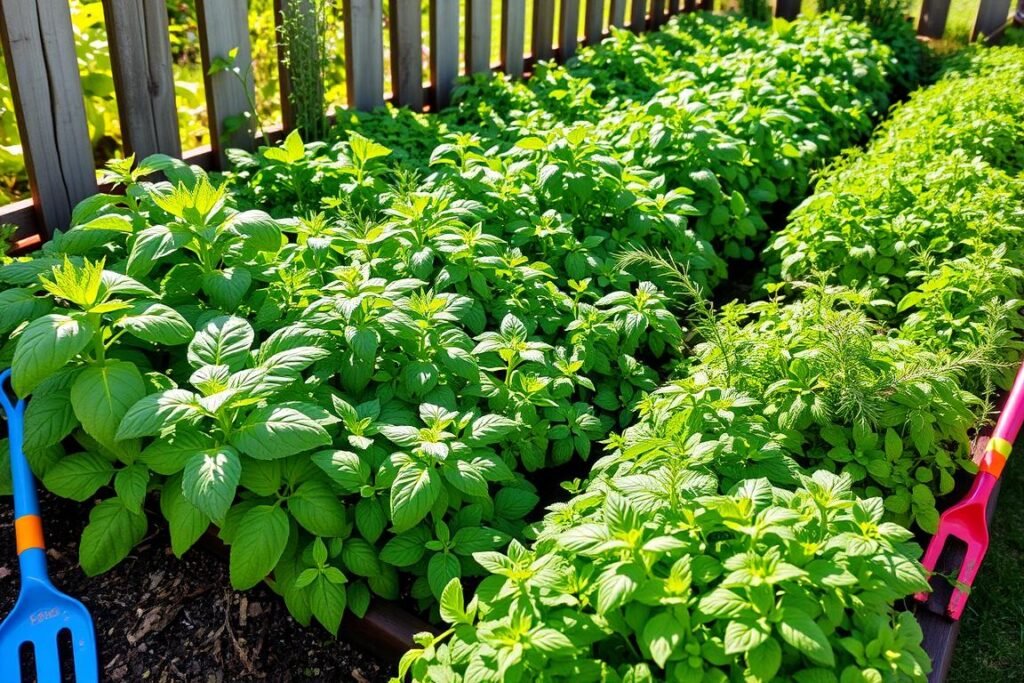
Basil: The Versatile Aromatic Herb
Basil is a beloved herb in the culinary world. It’s noted for its powerful aroma and unusual flavor. This plant plays a significant role in Italian and Mediterranean cuisine, offering a variety of culinary applications.
Sweet Basil and Its Mediterranean Flair
Sweet basil is the most well-known type of basil. It has a sweet, somewhat peppery flavor. This herb is crucial in Italian cookery, contributing flavor to pesto and caprese salad.
Its leaves work nicely with tomatoes, cheese, and other Mediterranean meals. This produces a wonderful blend of flavors.
Asian Basil: Anise-Flavored Variation
Asian basil has a stronger anise taste than sweet basil. It’s a crucial element in Asian recipes, such as curries and stir-fries. Its unusual flavor provides a new edge to various foods.
| Variety | Flavor Profile | Culinary Uses |
|---|---|---|
| Sweet Basil | Fragrant, slightly peppery | Italian and Mediterranean dishes, pesto, caprese salad |
| Asian Basil | Anise-like flavor | Asian curries, stir-fries, Thai cuisine |
In Mediterranean or Asian cuisines, exploring basil may make your meal fantastic. This versatile herb will take your cooking to new heights.
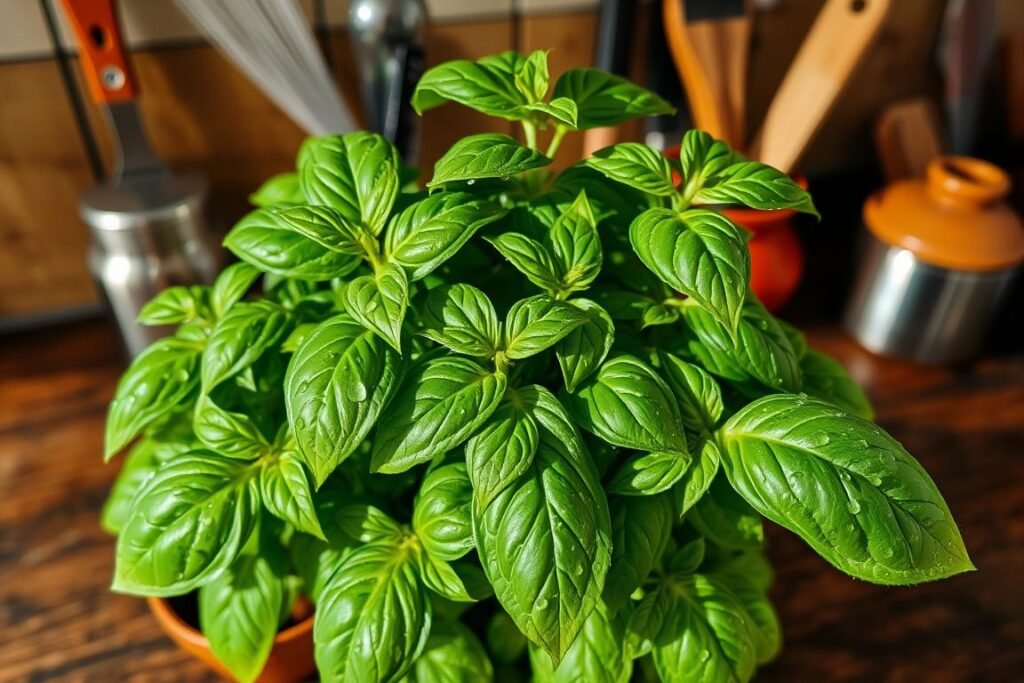
“Basil is the king of all plants. It’s the most aromatic and fragrant, and it truly livens up a meal.” Wolfgang Puck
Cooking Herbs: Expanding Your Culinary Horizons
There’s more to cooking than just basil. The world of herbs is full of flavors and smells that can make your food better. From dill’s light taste to rosemary’s earthy scent, each herb can change your dishes. Dive into the world of culinary herbs, herb varieties, herb flavors, herb seasoning, and aromatic herbs to grow your cooking skills.
Growing your own herbs is rewarding and easy. You can grow them even in small spaces like windowsills or balconies. Planting at least two of each herb ensures you always have some on hand.
When growing herbs, make sure they get at least six hours of sunlight. Use soil that drains well and fertilize monthly. Water them when the soil feels dry to help them grow.
| Herb | Health Benefits | Culinary Uses |
|---|---|---|
| Allspice | Relieves gas, bloating, stomach upset | Caribbean jerk seasoning, Middle Eastern cuisine |
| Basil | Anti-inflammatory, anti-bacterial properties | Italian seasoning, Thai cuisine |
| Bay Leaf | Rich in vitamins A and C, iron, potassium, calcium, and magnesium; aids in treating migraines | Soups, stews, rice dishes |
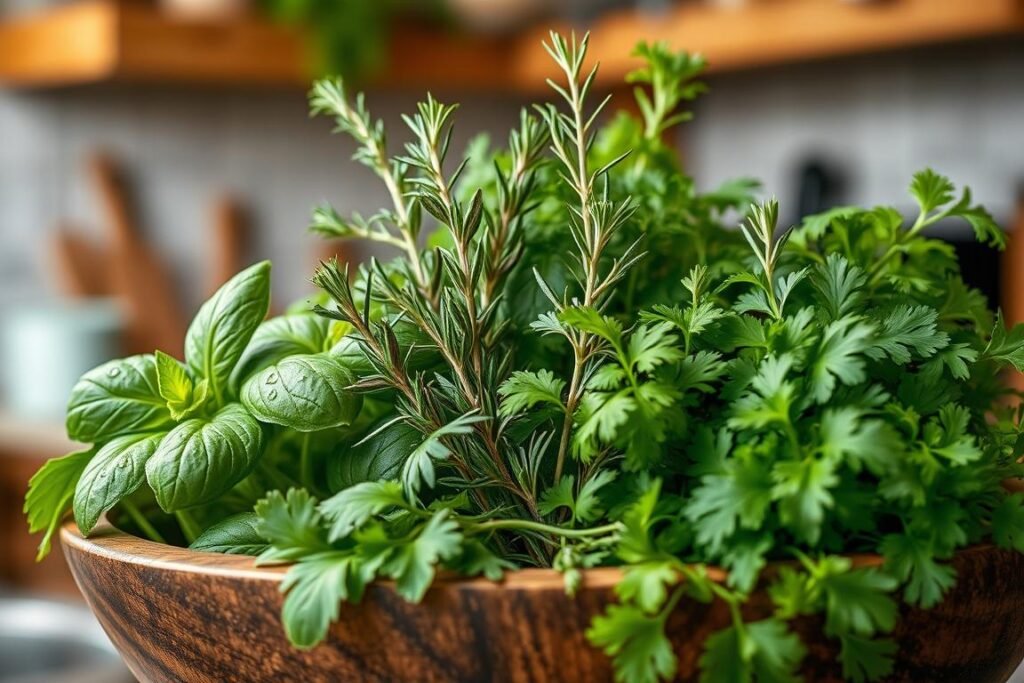
Discover the vast world of culinary herbs and how they can change your cooking. Whether you want to add Mediterranean flair, Asian flavors, or just improve the taste, herbs are endless. Start this culinary journey and make your meals even better.
Chives: The Mild Onion Relative
Chives belong to the onion family but have a milder taste. They add a garlicky flavor to dishes. Their bright green color and soft texture make them perfect for finishing touches, like on baked potatoes, creamy soups, and omelets.
Enhancing Dishes with a Delicate Garlic Flavor
Chives have a mild taste compared to onions and garlic. They have less sulfur compounds, which are key to the strong smell and taste of onions and garlic. This makes chives a great culinary herb to use freely without overpowering other flavors.
For nearly 5,000 years, chives have been used in Chinese cooking. They’re also a key part of the French herb seasoning fine herbes, along with tarragon, chervil, and parsley. Their mild onion flavor and garlic flavor are perfect for many dishes, like savory tarts, dips, baked potatoes, and creamy soups.
To get the most out of chives, add them towards the end of cooking or use them fresh as a herb seasoning garnish. Their delicate texture can get damaged by too much heat. So, it’s best to use them as a finishing touch, not for long cooking times.
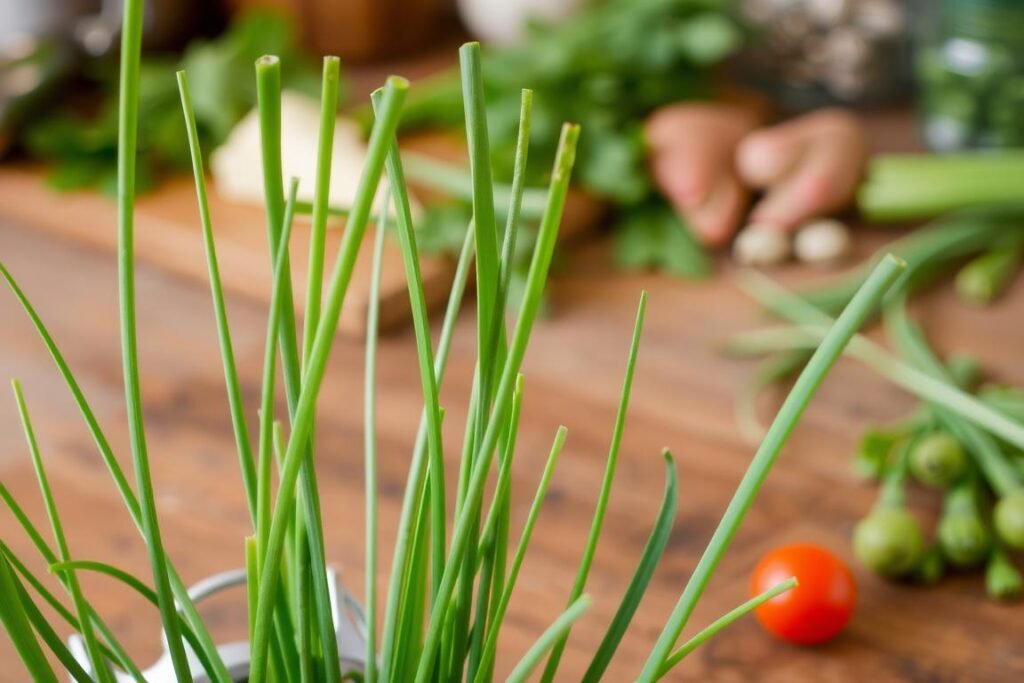
“Chives are a fantastic way to add a subtle, garlicky flavor to a wide variety of savory dishes. Their bright green color and delicate texture make them a beautiful and flavorful garnish.”
Chives are great for making herbed goat cheese or adding freshness to potato dishes. They’re a versatile culinary herb that can enhance your cooking with their onion flavor and garlic flavor.
Cilantro: Do you love or hate it?
Cilantro, often known as coriander, provokes intense sentiments in individuals. Some appreciate its fresh, lemony flavor, while others find it soapy and disagreeable. Despite the diverse perspectives, cilantro is a vital component in many Asian and Latin American recipes. It provides a vibrant, herbaceous taste to salsas, curries, and noodles soups.
The Divisive Herb in Asian and Latin Cuisines
Research demonstrates that individuals have strong opinions regarding cilantro. Most either love it or despise it, making it a contentious plant. Some people’s genes make them more sensitive to cilantro’s aldehydes, resulting in hatred.
Interestingly, women are more likely to identify a soapy flavor and detest cilantro, research revealed. On the other side, African-Americans, Latinos, East Asians, and South Asians are less likely to find cilantro soapy compared to Europeans. This reveals that culture and heredity impact how we taste cilantro.
There may be a way to convert cilantro haters. Crushing cilantro leaves before using them may decrease the soapy flavor, some claim. Also, getting acclimated to cilantro over time may make even the strongest haters appreciate it.
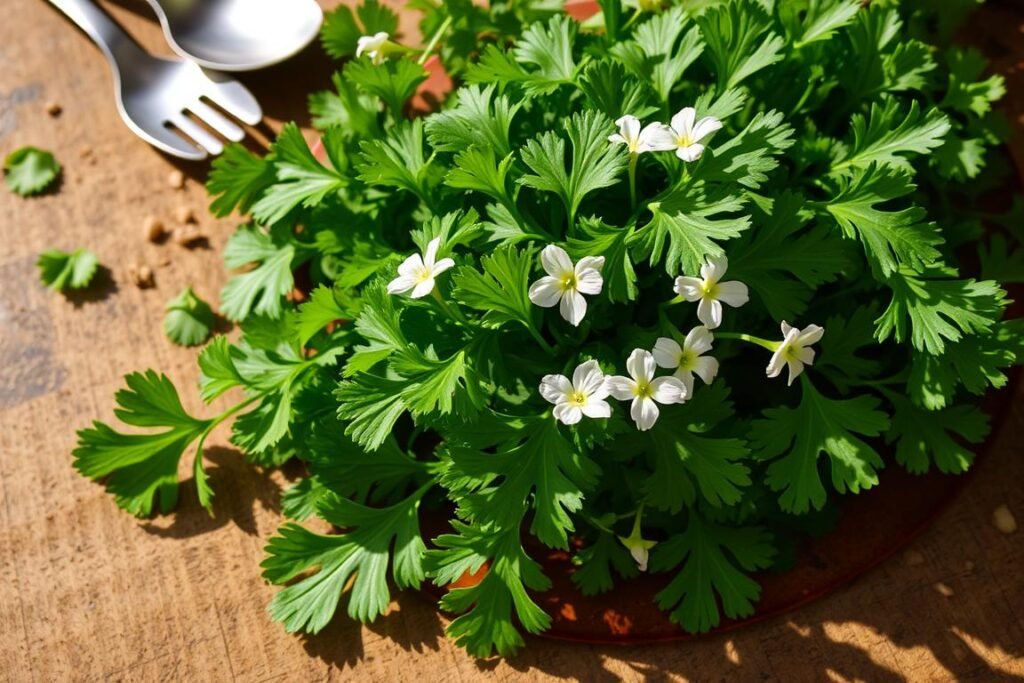
Cilantro is also excellent for you, despite the disagreement. It’s packed with antioxidants, iron, magnesium, and manganese. The dodecanal molecule in cilantro has antibacterial activity against salmonella. It also helps with nausea and is a natural diuretic.
Whether you love or dislike cilantro, it’s a key element of many cuisines. Knowing why we feel the way we do about it might help us appreciate its worth. Even if it’s not your favorite, cilantro offers distinct advantages and tastes.
Dill: The Delicate Anise-Flavored Fronds
Dill’s fronds have a mild, anise-like taste. They mix nicely with delicate proteins, particularly seafood. Dill is also vital in pickling and preserving, contributing its characteristic anise taste to pickled cucumbers and other culinary herbs.
Dill belongs to the Apiaceae family, like carrots. It’s planted as an annual plant from the Mediterranean to southeastern Europe. The dill seeds are noted for their pungent taste, contributing to pickling dishes. Different varieties of dill are produced for flavor or health purposes, such as assisting digestion and reducing infections.
- Dried dill is more concentrated and powerful compared to fresh, excellent for dishes needing a stronger herb flavor character.
- When replacing dried dill with fresh, or vice versa, it’s recommended to use 1/3 less dried dill than fresh.
- Fresh dill may be purchased in the vegetable aisle, whereas dried dill (weed and seed) is often placed in the spice department.
Whether fresh or dried, dill complements many recipes. It works nicely with root vegetables, summer fruits, creamy bases, and dairy items. It adds a fresh and spicy touch to your food. Discover the numerous applications of dill in your cooking.
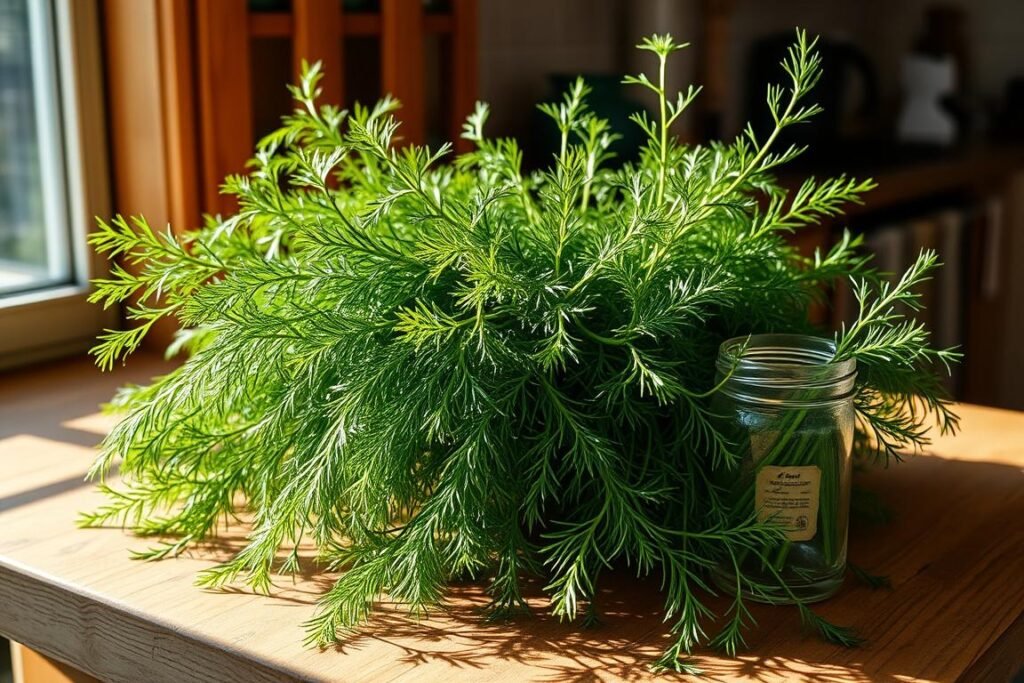
Mint: A Refreshing Twist for Sweet and Savory Dishes
Mint is a versatile herb that adds a refreshing touch to both sweet and savory dishes. Its unique flavor makes it a favorite for many recipes, from cool cocktails to fragrant lamb dishes. Whether you’re an experienced cook or new to culinary herbs, mint is essential in your kitchen.
The Versatile Herb for Cocktails and Culinary Creations
Fresh mint is best from May to September, when it thrives in the warm weather. The herb’s thick stalks and thin, textured leaves are where the flavor is. Only the leaves are edible.
When picking mint, choose bright green leaves with a strong scent and no signs of wilting. To keep mint’s flavor and texture, add it towards the end of cooking. It’s great for garnishing cocktails like mint juleps and for adding flavor to grain bowls, salads, and sauces. Mint’s versatility and refreshing taste make it a favorite in both sweet and savory dishes.
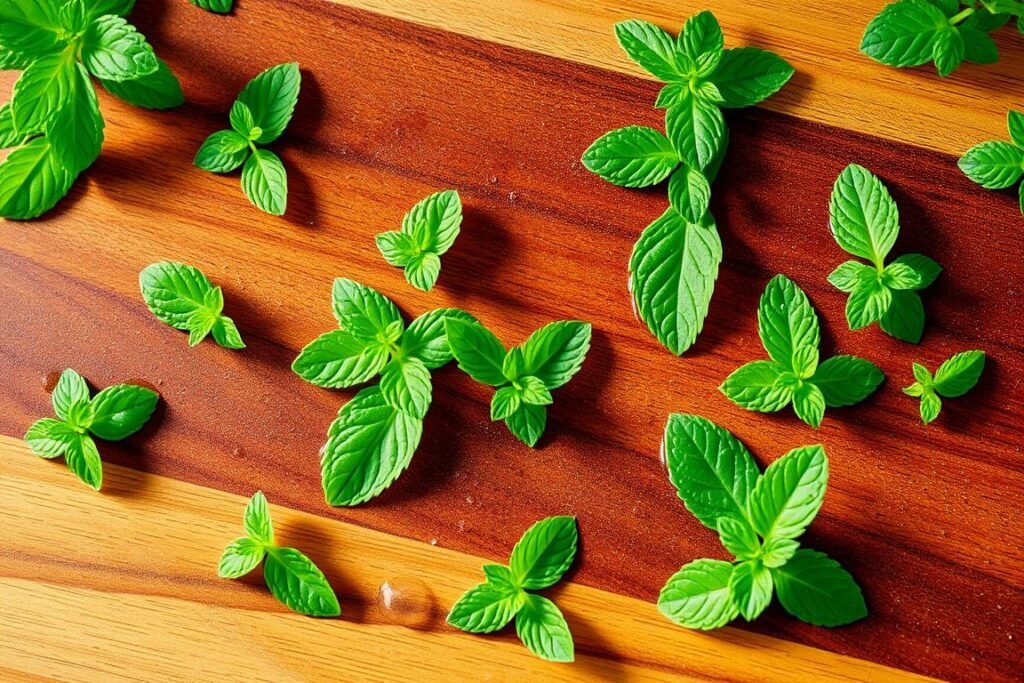
Mint has been valued for centuries for its health benefits and cleanliness. It’s packed with antioxidants and vitamins. The menthol in mint can help with asthma and congestion. It’s also good for oral hygiene.
Looking to add freshness to your cocktail or enhance a savory dish? Mint is a flavorful and versatile herb that should be in your kitchen. Try out its many uses and see how it can improve your cooking.
Oregano: The Earthy Italian Staple
Oregano is a key herb in Italian and Mediterranean cooking. It has a strong, earthy taste that holds up well to long cooking. This herb is a must-have in many Italian dishes, like tomato sauces, grilled meats, and roasted veggies.
When using fresh or dried oregano, notice the taste varies. Fresh oregano tastes milder and herbaceous. Dried oregano, on the other hand, is more pungent and woodsy.
In Italian cookery, oregano is typically coupled with basil, rosemary, and thyme. Together, they offer a rich flavor basis for sauces and marinades. Oregano’s ability to endure protracted cooking makes it vital in slow-cooked foods like braises and ragus.
Oregano is highly appreciated for its health advantages. It’s filled with antioxidants and has anti-inflammatory qualities. This makes it a wonderful supplement to a Mediterranean diet.
Whether creating a traditional lasagna, a robust ragu alla Bolognese, or flavoring Mediterranean veggies, oregano lends a distinct taste. It brings the flavors of the Mediterranean to your table.
| Herb Seasoning | Culinary Uses in Italian Cuisine |
|---|---|
| Oregano |
|
| Basil |
|
| Rosemary |
|
| Thyme |
|
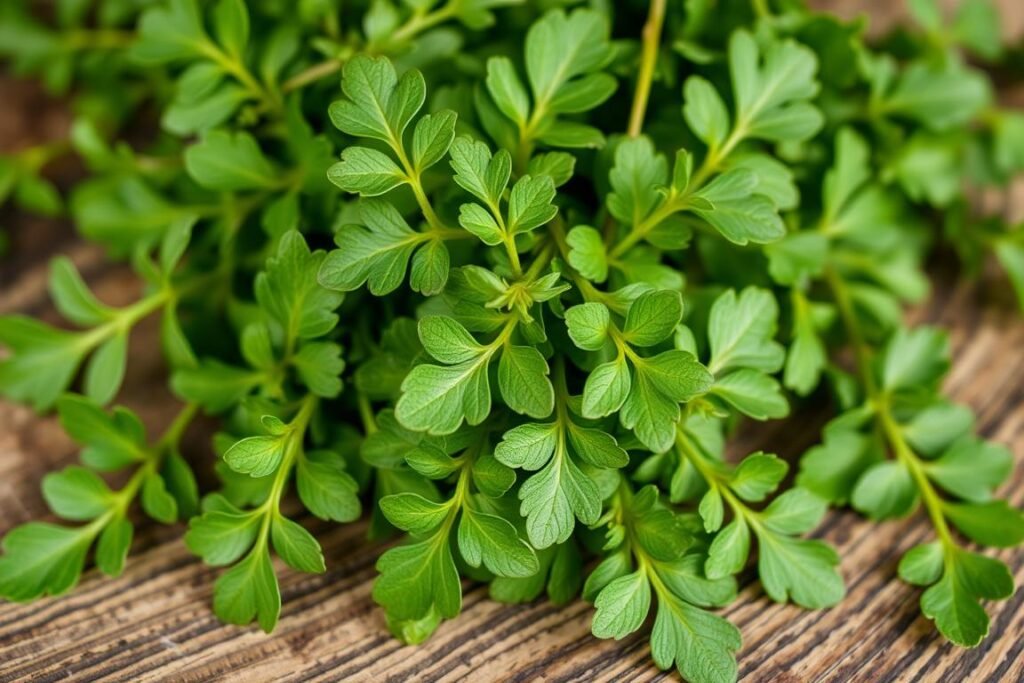
“Oregano is a delicious herb associated with Italian cuisine.” Its pungent, earthy scent and flavor can hold up to lengthy cooking durations, making it an important component in many classic Italian cuisines.”
Conclusion
Herbs are essential in every kitchen, bringing gourmet herbs and flavors to basic meals. Knowing the various features and herb seasoning usage of 12 key herbs will increase your culinary abilities. This book helps both beginner and seasoned chefs utilize these aromatic ingredients to prepare wonderful dishes.
Herbs such as basil and oregano, as well as mint and cilantro, each add a unique taste to recipes. Try using them in sauces, marinades, soups, and salads. As you mix and combine herb planting methods, you’ll uncover new ways to flavor your cuisine.
Using fresh, nutrient-rich herbs is fantastic for your health and flavor. They add richness to your dishes and provide health benefits, such as strengthening immunity and lowering inflammation. Let these culinary hints inspire you to discover the world of herbs and enrich your meals.
FAQ
What are the key benefits of using herbs in cooking?
Herbs make dishes more interesting and flavorful. They add depth and aroma, turning simple meals into something special. Herbs can brighten flavors and add a unique taste to any dish.
What are some of the essential cooking herbs every home cook should know?
This guide covers 12 key herbs like basil, chives, and oregano. Each has its own taste and uses. They can enhance many dishes, making them more delicious.
How can I best utilize basil in my cooking?
Basil is great with tomatoes and cheese, especially in Italian dishes. Sweet basil has a mild flavor. Asian basil, with its strong anise taste, is perfect for curries and stir-fries.
What are the key differences between fresh and dried herbs?
Fresh herbs taste more vibrant and herbaceous. Dried herbs are more concentrated and earthy. When substituting, use less dried herbs because they pack a stronger punch.
How can I successfully grow and maintain an herb garden at home?
Having a home herb garden means always having fresh herbs. Different herbs need different conditions, like sunlight and soil. Research what each herb needs to grow well.
What are some unique ways to incorporate herbs into my cooking?
Herbs can be used in many creative ways, like in cocktails or teas. They’re also great in pestos and as garnishes. Mixing herbs can lead to exciting new flavors.



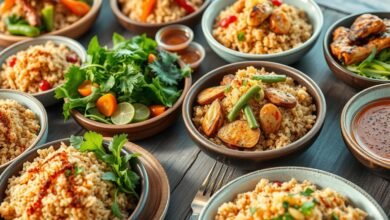

One Comment